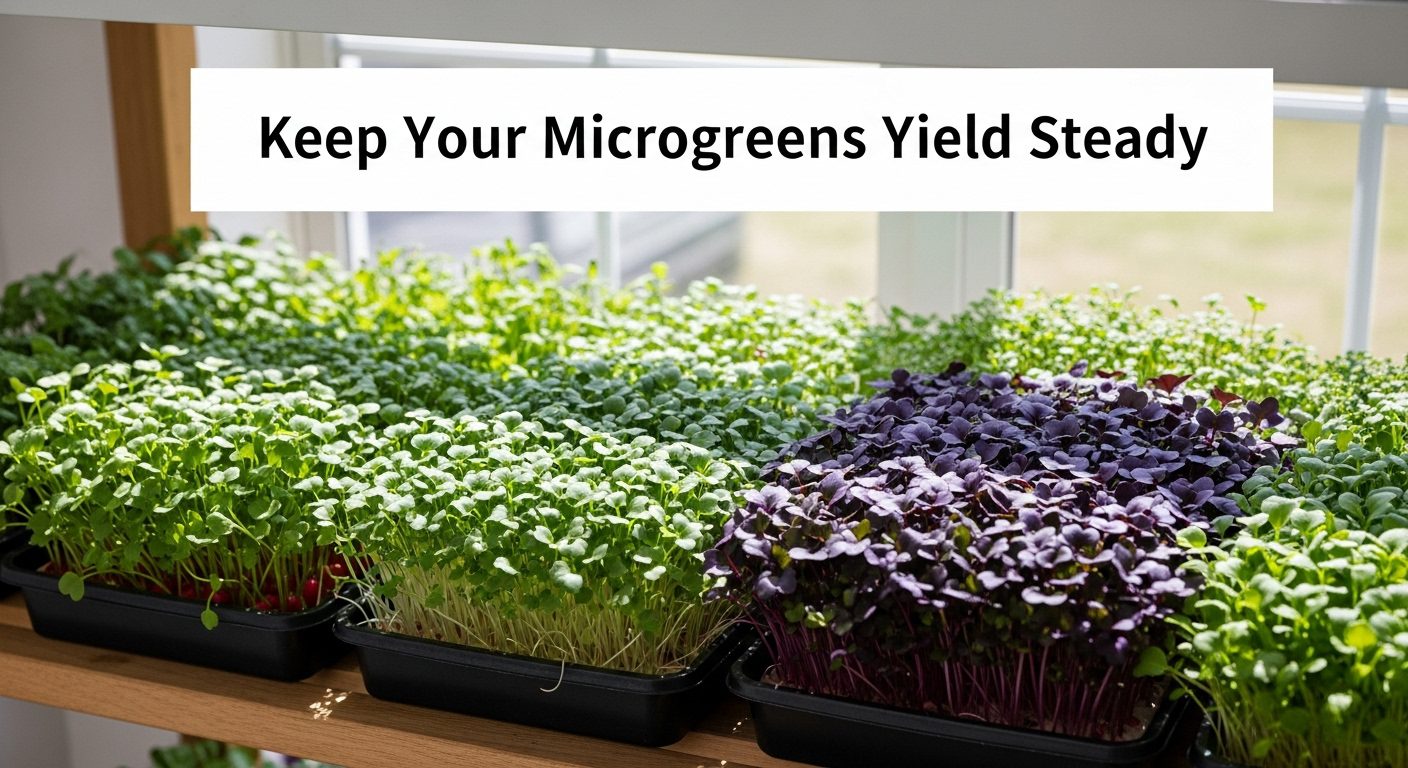
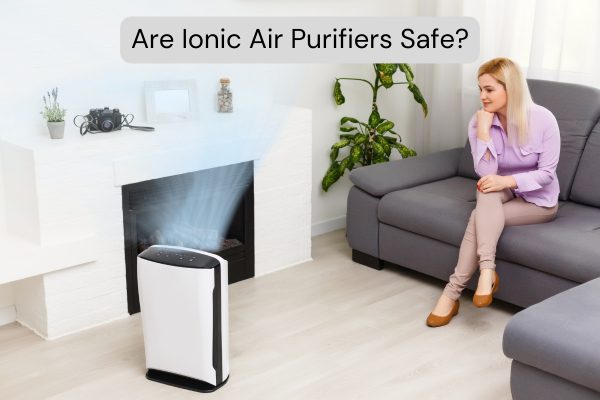
Are ionic air purifiers safe? It’s a question that deserves a clear, evidence-based answer. While these devices promise cleaner air through advanced ion technology, recent scientific studies and government warnings reveal safety concerns that every potential buyer needs to understand.
Many consumers unknowingly expose themselves and their families to potentially harmful ozone levels while trying to improve their indoor air quality. The irony is troubling: a device meant to make your air healthier might actually be making it more dangerous to breathe.
Here’s the direct answer you need: While ionic air purifiers can remove some airborne particles, most models produce ozone as a byproduct. When ozone levels exceed the EPA’s safety limit of 50 parts per billion (ppb), they can cause respiratory irritation, trigger asthma attacks, and potentially lead to long-term lung damage. Some ionic air purifiers produce ozone levels far above this safe threshold.
This comprehensive guide examines the science behind ionic air purifier safety, analyzes health risks using data from the EPA, FDA, and California Air Resources Board, and provides safer alternatives for achieving truly clean indoor air. You’ll learn exactly how to determine if an ionic air purifier is safe for your specific situation and discover better options for protecting your family’s respiratory health.
Before evaluating safety, it’s essential to understand how ionic air purifiers actually work. This knowledge helps explain why these devices can pose health risks despite their air-cleaning intentions.
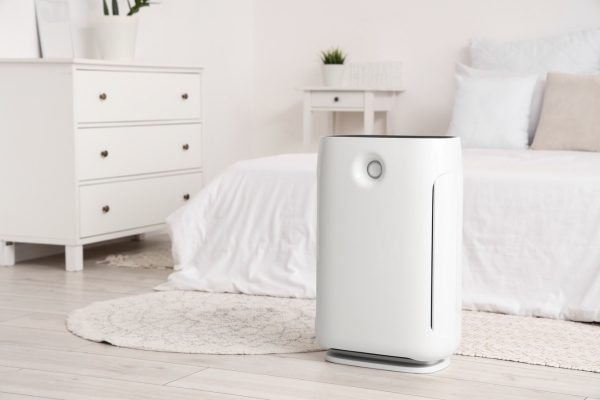
Ionic air purifiers operate by releasing negatively charged ions into your room’s air. These devices use high voltage to electrically charge air molecules, creating negative ions. The process involves metal pins or wires inside the purifier that emit electrons. When these electrons collide with neutral air molecules, they create negatively charged ions.
Once released, these negative ions attach to positively charged particles in the air—including dust, pollen, smoke, and other pollutants. This attachment makes the particles heavier, causing them to fall from the air onto surfaces like floors, walls, and furniture. While this removes particles from the air you breathe, it doesn’t eliminate them from your environment entirely.
Despite different marketing terms, “ionizers” and “ionic air purifiers” refer to the same technology. Both use electrically charged molecules to remove airborne particles. The terminology difference is purely marketing-based, not technical.
Some manufacturers add collection plates to their devices, which attract the charged particles. Others simply let the particles fall onto room surfaces. More advanced models combine ionization with other technologies like HEPA filters or UV light. However, the core ionization process—and its potential to produce ozone—remains the same across all these variations.
Nature produces negative ions near waterfalls, ocean waves, and after thunderstorms. These natural negative ions can create a fresh, clean feeling in the air without harmful side effects. Natural ion concentrations typically range from 1,000 to 4,000 ions per cubic centimeter in pristine environments.
Artificial ion production in air purifiers attempts to replicate this natural process. However, the electrical method used in these devices often creates ozone as an unwanted byproduct. While manufacturers may claim their products create “natural” negative ions, the artificial generation process fundamentally differs from nature’s methods and can produce ozone levels that would never occur naturally in breathable air.
Comparison Table: Natural Ion Sources vs. Ionic Air Purifiers
| Characteristic | Natural Ion Sources | Ionic Air Purifiers |
|---|---|---|
| Ion Concentration | 1,000-4,000 ions/cm³ | 50,000-1,000,000 ions/cm³ |
| Ozone Production | None | Often 10-100+ ppb |
| Coverage Area | Varies naturally | 100-500 sq ft typically |
| Health Impact | Beneficial | Potentially harmful |
| Particle Removal | Minimal | Moderate |
| Energy Source | Natural phenomena | Electricity |
The fundamental safety issue with ionic air purifiers isn’t the ions themselves—it’s the ozone they produce. Understanding this connection is crucial for making an informed decision about these devices.
When ionic air purifiers create negative ions through electrical discharge, they often generate ozone (O₃) as an unintended consequence. This happens because the high-voltage electrical field splits oxygen molecules (O₂) in the air. Some of these split oxygen atoms recombine into ozone rather than regular oxygen.
The amount of ozone produced varies significantly between devices. Factors affecting ozone production include the voltage used, the design of the ionizing elements, and the presence of any ozone-suppression technology. Unfortunately, many manufacturers downplay or fail to disclose their products’ ozone emissions, leaving consumers unaware of the potential risks.
Multiple government agencies have established safety limits for indoor ozone exposure:
The FDA mandates that medical devices cannot produce more than 50 parts per billion (ppb) of ozone. This limit applies to any air purifier marketed with health claims. The EPA recommends even stricter standards for sensitive individuals, suggesting indoor ozone levels should not exceed 70 ppb for 8-hour exposure.
California’s Air Resources Board (CARB) took the strongest stance in 2007, requiring all air purifiers sold in California to be tested and certified for ozone emissions. CARB’s regulation effectively bans the sale of ozone generators and requires ionic air purifiers to emit near-zero ozone levels to receive certification.
Parts per billion (ppb) might sound like tiny amounts, but ozone is a powerful oxidant that affects health even at low concentrations. To put this in perspective, 50 ppb means 50 ozone molecules for every billion air molecules—enough to cause noticeable health effects in many people.
At 50-100 ppb, sensitive individuals may experience throat irritation, coughing, and chest discomfort. Levels above 100 ppb can trigger asthma attacks and cause breathing difficulty even in healthy adults. Some ionic air purifiers have been found to produce 200-500 ppb in typical room conditions—far exceeding safe limits.
Quick Reference Box: Ozone Safety Limits by Organization
| Organization | Limit | Exposure Duration | Application |
|---|---|---|---|
| FDA | 50 ppb | Continuous | Medical devices |
| EPA | 70 ppb | 8 hours | General indoor air |
| NIOSH | 100 ppb | 8 hours | Workplace safety |
| CARB | Near-zero | Continuous | California air purifiers |
| WHO | 50 ppb | 8 hours | International guideline |
The health implications of ionic air purifier use extend beyond simple irritation. Understanding these risks helps explain why many health professionals now advise against these devices.
Ozone exposure from ionic air purifiers can cause immediate respiratory symptoms. The gas irritates and inflames the lining of your respiratory system, from your throat down to your lungs. Common immediate symptoms include persistent coughing, chest tightness, shortness of breath, and throat irritation.
These effects occur because ozone is a powerful oxidizing agent that damages the cells lining your respiratory tract. Even short-term exposure at levels common with ionic air purifiers can reduce lung function. A 2020 study published in the International Journal of Environmental Research and Public Health found that exposure to negative ions with accompanying ozone increased systemic oxidative stress markers, indicating cellular damage throughout the body.
Repeated exposure to elevated ozone levels can cause permanent lung damage. Long-term effects include decreased lung capacity, increased susceptibility to respiratory infections, and potential development of asthma in previously healthy individuals. The EPA warns that chronic ozone exposure may even increase mortality risk in people with existing health conditions.
Research has shown that regular exposure to indoor ozone can accelerate lung aging. One study found that people exposed to 80 ppb of ozone for several hours daily showed lung function decline equivalent to smoking a pack of cigarettes per day. This comparison illustrates the serious nature of long-term ionic air purifier use in poorly ventilated spaces.
Certain populations face heightened risks from ionic air purifier emissions. Children’s developing lungs are particularly vulnerable to ozone damage. Their higher breathing rates relative to body size mean they inhale more ozone per pound of body weight than adults.
Elderly individuals often have reduced lung capacity and weakened immune systems, making them more susceptible to ozone’s harmful effects. People with asthma, COPD, or other respiratory conditions may experience severe symptom exacerbation even at ozone levels considered safe for healthy adults. For these groups, ionic air purifiers can transform from helpful devices into serious health hazards.
Pet safety is a crucial consideration often overlooked in ionic air purifier discussions. Animals, particularly birds, show extreme sensitivity to ozone exposure. Birds’ efficient respiratory systems, which extract more oxygen from air, also absorb more pollutants, making them vulnerable to ozone poisoning at levels that might not affect humans.
Dogs and cats, while more resilient than birds, still face risks from ozone exposure. Pets spend more time near the floor where heavier charged particles settle, potentially increasing their exposure to both ozone and concentrated pollutants. Symptoms in pets include coughing, wheezing, eye irritation, and lethargy. Small animals with high metabolic rates face the greatest risks from ionic air purifier emissions.
To make an informed decision, it’s important to understand both what ionic air purifiers do well and where they fall short. This balanced view helps explain why these devices remain popular despite safety concerns.
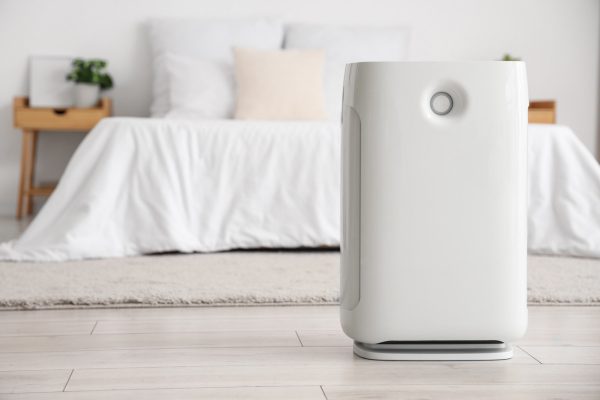
Ionic air purifiers offer several legitimate advantages. They operate silently since they don’t require fans, making them appealing for bedrooms and quiet spaces. Their energy consumption is minimal—typically under 10 watts—resulting in negligible electricity costs. Without filters to replace, they promise lower long-term maintenance expenses.
These devices can effectively remove certain ultra-fine particles that might pass through some mechanical filters. Smoke particles, some bacteria, and virus-carrying droplets can be charged and removed from breathing air. The ionization process also eliminates some odors by breaking down odor-causing molecules. For specific applications where ozone exposure can be controlled, these benefits might outweigh the risks.
Despite manufacturer claims, ionic air purifiers show significant limitations in real-world performance. They cannot remove larger particles like pet hair or visible dust effectively. The charged particles they do remove aren’t eliminated—they simply relocate to surfaces throughout your room, creating dirty walls and furniture that require frequent cleaning.
Independent testing by Consumer Reports and other organizations consistently shows ionic air purifiers perform poorly compared to HEPA filters for overall particle removal. They provide no benefit against common allergens already settled on surfaces and cannot filter gaseous pollutants like volatile organic compounds (VOCs) from cleaning products or furniture off-gassing.
Beyond ozone production, ionic air purifiers can create additional harmful compounds. When ozone reacts with common household chemicals—including those from carpets, cleaning products, and cooking—it can form formaldehyde, a known carcinogen. This secondary pollution often goes unmentioned in product marketing.
The ionization process also generates ultrafine particles smaller than 0.1 microns. These particles penetrate deep into lungs and can enter the bloodstream, potentially causing cardiovascular effects. A 2021 Colorado State University study found that ionic air purifiers increased concentrations of certain harmful VOCs while attempting to reduce others, essentially trading one type of pollution for another.
Pros/Cons Comparison Table
| Advantages | Disadvantages |
|---|---|
| Silent operation | Produces harmful ozone |
| Low energy consumption | Creates secondary pollutants |
| No filter replacement costs | Particles relocate, not removed |
| Removes some ultrafine particles | Ineffective for large particles |
| Reduces certain odors | No VOC removal |
| Compact design | Dirty surface accumulation |
| Health risks outweigh benefits |
The safety concerns about ionic air purifiers aren’t theoretical—they’re backed by decades of scientific research, legal actions, and regulatory interventions.
The Sharper Image Ionic Breeze became the poster child for ionic air purifier problems. Initially popular through aggressive infomercial marketing, the product faced scrutiny when Consumer Reports testing in 2003 revealed poor air cleaning performance and dangerous ozone emissions. The magazine found the Ionic Breeze produced ozone levels that could exceed EPA limits in typical room conditions.
Sharper Image sued Consumer Reports for $130 million over the negative review but lost the case and was ordered to pay $525,000 in legal fees. Following additional negative publicity and a class-action lawsuit by customers, Sharper Image’s sales plummeted. The company filed for bankruptcy in 2008, with the Ionic Breeze controversy cited as a primary factor. The settlement required Sharper Image to provide $19 merchandise credits to customers who purchased units between 1999 and 2007.
Recent research continues to validate concerns about ionic air purifiers. A 2021 Colorado State University study examining bipolar ionization devices—heavily marketed during COVID-19—found these systems created harmful byproducts while providing minimal air quality improvement. The research detected increased levels of acetone, ethanol, and toluene after ionizer operation.
Consumer Reports maintains its stance against ionic air purifiers after repeated testing. Their 2023 analysis found that even “low-ozone” ionic models performed poorly compared to HEPA filters while still producing measurable ozone. The organization specifically warns against any air purifier using ionization as its primary cleaning method.
California’s Air Resources Board (CARB) implemented the nation’s strictest air purifier regulations in 2007. The regulation requires all air purifiers sold in California to undergo testing and emit no more than 0.050 ppm of ozone. This effectively banned traditional ozone generators and forced ionic air purifier manufacturers to drastically reduce or eliminate ozone emissions.
CARB maintains a public database of certified air purifiers that meet their safety standards. Notably, very few ionic-only air purifiers appear on this list. Most certified devices using any ionization feature combine it with HEPA filtration and limit ion generation to minimize ozone production. This regulatory action has influenced air purifier standards nationwide, with many retailers now requiring CARB certification regardless of sale location.
Timeline of Major Ionic Air Purifier Safety Events
If you already own an ionic air purifier or are considering purchasing one, these practical steps will help you assess its safety for your specific situation.
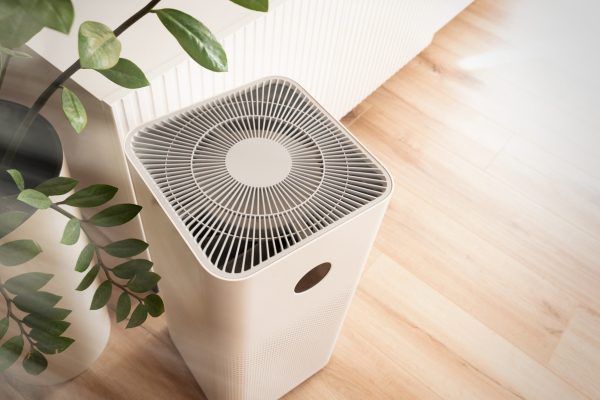
The first step in evaluating any ionic air purifier is checking for CARB certification. Visit CARB’s certified air cleaner database and search using your model number. Only devices on this list have been independently tested and verified to meet strict ozone emission limits.
If your air purifier isn’t CARB-certified, it likely produces unsafe ozone levels. Even if you don’t live in California, CARB certification represents the gold standard for air purifier safety. Many manufacturers now display CARB certification numbers prominently on packaging and product listings. Be wary of vague claims like “low ozone” or “ozone-safe” without specific certification numbers.
Legitimate manufacturers provide specific ozone emission data in parts per billion (ppb) or parts per million (ppm). Look for this information in product manuals, specification sheets, or company websites. Any manufacturer refusing to disclose ozone emissions or using misleading terms like “activated oxygen” should raise red flags.
Compare stated emissions against the FDA’s 50 ppb limit. Remember that manufacturer tests often use ideal conditions—actual room emissions may be higher. If specifications only mention “meets FDA requirements” without numbers, the device likely produces ozone at or near the 50 ppb limit, which many experts still consider too high for continuous exposure.
Several indicators suggest dangerous ozone levels from your air purifier. A sharp, chlorine-like smell near the device indicates high ozone production—you should not smell anything from a safe air purifier. Black or gray residue on walls near the unit shows excessive particle charging and likely ozone generation.
Physical symptoms provide the clearest warnings. If you experience throat irritation, persistent coughing, headaches, or breathing difficulty that improves when away from the purifier, immediately discontinue use. Pets showing respiratory distress, excessive sneezing, or lethargy near the device also indicate unsafe ozone levels. Trust these warning signs over manufacturer claims.
Safety Checklist for Current Ionic Air Purifier Owners
Fortunately, several air purification technologies provide superior performance without the health risks associated with ionic air purifiers. Understanding these alternatives helps you make a safer choice for your indoor air quality needs.
High-Efficiency Particulate Air (HEPA) filters remain the most trusted air purification technology. True HEPA filters capture 99.97% of particles as small as 0.3 microns, including dust, pollen, pet dander, and many bacteria. Unlike ionic purifiers, HEPA filters physically trap particles, preventing them from re-entering your air or settling on surfaces.
Modern HEPA purifiers operate quietly with variable fan speeds for different situations. While they require filter replacements every 6-12 months, this ensures captured pollutants are removed from your home entirely. The technology produces zero ozone and no harmful byproducts. Medical facilities, clean rooms, and allergy specialists consistently recommend HEPA filtration over ionic alternatives.
Activated carbon filtration excels where both ionic and HEPA filters fall short—removing gaseous pollutants and odors. The porous carbon structure adsorbs VOCs, cooking smells, pet odors, and chemical fumes. Many air purifiers combine HEPA and activated carbon filters for comprehensive air cleaning.
Carbon filters work through adsorption, trapping gas molecules in microscopic pores. This process produces no ozone or secondary pollutants. While carbon filters require replacement when saturated, they provide reliable chemical and odor removal that ionic purifiers cannot match. For homes with smoking, cooking odors, or chemical sensitivities, activated carbon offers safe, effective solutions.
Some modern air purifiers use UV-C light to destroy bacteria, viruses, and mold spores. When properly designed, UV-C systems produce no ozone while providing germicidal benefits. The key is using UV-C wavelengths (254 nanometers) that don’t generate ozone, unlike shorter wavelengths.
Quality UV-C purifiers shield the light within the unit, preventing eye and skin exposure. Combined with HEPA filtration, UV-C technology offers comprehensive protection against both particles and microorganisms. Look for devices specifically marketed as “ozone-free UV-C” with sealed chambers that prevent any light leakage.
Several natural methods improve indoor air quality without any technological risks. Regular ventilation with outdoor air dilutes indoor pollutants effectively—open windows when outdoor air quality permits. Houseplants like spider plants and pothos remove some VOCs while adding humidity and aesthetic appeal.
Source control provides the most effective natural approach. Use low-VOC paints and cleaners, maintain proper humidity to prevent mold, and vacuum regularly with HEPA-equipped cleaners. While natural methods alone may not match mechanical filtration’s efficiency, they complement safer technologies without introducing new hazards.
Technology Comparison Chart with Safety Ratings
| Technology | Particle Removal | Odor Control | Microbe Control | Ozone Production | Safety Rating |
|---|---|---|---|---|---|
| HEPA Filter | Excellent | Poor | Good | None | ★★★★★ |
| Activated Carbon | Poor | Excellent | Poor | None | ★★★★★ |
| UV-C (Ozone-free) | Poor | Poor | Excellent | None | ★★★★★ |
| Ionic/Ionizer | Fair | Fair | Fair | Often High | ★★☆☆☆ |
| Ozone Generator | Poor | Good | Good | Very High | ★☆☆☆☆ |
| Natural Methods | Poor | Fair | Poor | None | ★★★★★ |
While ionic air purifiers generally pose unacceptable risks for home use, understanding when they might be appropriate—and when they definitely aren’t—helps you make informed decisions.
Limited scenarios exist where ionic technology’s benefits might justify controlled use. Commercial spaces with high ceilings and excellent ventilation can dilute ozone to safer levels. Some industrial applications, like unoccupied storage areas or production facilities with proper safety equipment, use ionization for specific contamination control.
Newer “needlepoint bipolar ionization” systems claim to produce minimal ozone while maintaining effectiveness. When combined with HEPA filtration and used as a supplementary technology rather than primary purification, these advanced systems may provide additional benefits. However, any ionic technology requires professional assessment of space, ventilation, and exposure risks before implementation.
Industrial ionic air purification differs fundamentally from residential use. Industrial facilities employ monitoring equipment, enforce exposure limits, and ensure worker protection through ventilation and time restrictions. Professional oversight and regular air quality testing make controlled industrial use feasible.
Residential environments lack these safeguards. Continuous exposure, sleeping near devices, and presence of vulnerable individuals make home ionic purifier use risky. The confined spaces, limited ventilation, and 24/7 operation typical in homes concentrate ozone to dangerous levels. What works in a warehouse with 30-foot ceilings and industrial ventilation becomes hazardous in a bedroom.
Some manufacturers now produce ionic air purifiers specifically designed to minimize ozone emissions. These devices use lower voltages, specialized materials, or ozone-decomposition catalysts. While representing improvements over traditional ionic purifiers, questions remain about their long-term safety and effectiveness.
“Plasmacluster” and similar technologies claim to produce beneficial ions without harmful ozone. However, independent verification of these claims remains limited. Even low-ozone ionic devices may produce other concerning byproducts or prove less effective than established technologies. For most residential users, proven ozone-free alternatives like HEPA filtration provide better risk-benefit ratios.
Understanding common concerns helps clarify the complex issues surrounding ionic air purifiers. These evidence-based answers address the questions consumers ask most frequently.
Not all ionic air purifiers pose equal dangers, but most produce some level of ozone that could affect sensitive individuals. CARB-certified models produce minimal ozone meeting strict safety standards. However, even “safe” ionic purifiers generally perform worse than HEPA filters while still carrying some risk. The technology inherently tends toward ozone production, making completely safe ionic purification challenging to achieve reliably.
Health experts strongly advise against using ionic air purifiers in homes with children. Children’s developing respiratory systems show particular vulnerability to ozone damage. Their higher breathing rates and tendency to play on floors where particles settle increase exposure risks. No ionic air purifier provides benefits that justify potential harm to children’s lung development. HEPA filtration offers superior protection without health risks.
Any ozone production from an air purifier should concern health-conscious consumers. While FDA allows up to 50 ppb, many researchers consider this too high for continuous exposure. Sensitive individuals may experience symptoms at levels as low as 10-20 ppb. The safest approach is choosing air purifiers that produce zero ozone. Technologies exist that clean air effectively without generating any ozone—there’s no reason to accept any ozone exposure from air purification.
Ionic air purifiers show limited effectiveness compared to mechanical filtration. While they can remove some airborne particles, they merely relocate them to surfaces rather than eliminating them. Independent testing consistently shows ionic purifiers ranking last in particle removal efficiency. They cannot remove gases, VOCs, or odors effectively despite marketing claims. For genuine air cleaning, HEPA filtration combined with activated carbon provides measurably superior results.
While both produce ozone, they differ in primary purpose and ozone output levels. Ionizers aim to clean air through particle charging, producing ozone as an unwanted byproduct—typically 10-100 ppb. Ozone generators intentionally produce high ozone concentrations (often 1,000+ ppb) claiming to eliminate odors and kill microorganisms. Both pose health risks, but ozone generators create immediately dangerous conditions. Neither belongs in occupied residential spaces.
The evidence is clear: while ionic air purifiers offer the appeal of quiet, maintenance-free operation, the potential health risks from ozone exposure generally outweigh any benefits for home use. Government agencies, scientific studies, and consumer advocacy groups consistently warn against these devices, particularly for households with children, elderly residents, pets, or anyone with respiratory conditions.
The core issue isn’t whether ionic air purifiers can remove some particles from the air—it’s that they do so while potentially creating more dangerous conditions through ozone production and secondary pollutant formation. Technologies like HEPA filtration, activated carbon, and ozone-free UV-C provide superior air cleaning without harmful byproducts. These proven alternatives cost more upfront but protect rather than potentially harm your family’s respiratory health.
Your Action Plan: If you currently use an ionic air purifier, check its CARB certification status immediately using our safety checklist. For new purchases, invest in HEPA-based systems with activated carbon for comprehensive, safe air purification. Your lungs—and your family’s—deserve air cleaning technology that improves rather than compromises indoor air quality. The choice between effective filtration and risky ionization should be easy when your health is at stake.
